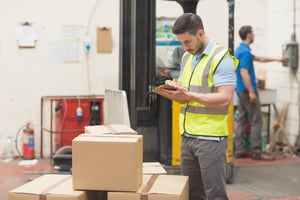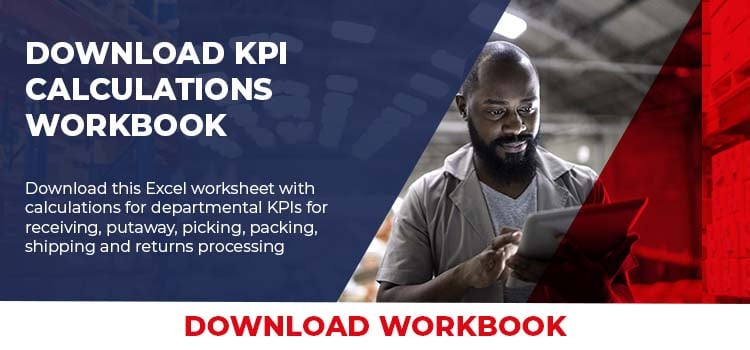The COVID-19 pandemic is infecting hundreds of thousands of people and threatening to shut down millions of businesses. Many business owners are trying to stay open and service the customer while keeping their employees and customers safe. Other owners temporarily shut down and are thinking about how and when they can reopen.

As consultants to wholesale distributors, retailers, and ecommerce companies, we are working with a number of “essential” companies remaining operational, as well as retailers implementing local, store level-pick-with curbside pickup. Like you, our hope is to get through this and move on to the “new normal.”
Adhere to CDC, OHSA and other government guidelines
We are not advocating violation of any directives or proclamations by health and safety agencies; by local, state or Federal government; by the Centers For Disease Control (CDC); or OSHA regulations in dealing with the COVID-19 crisis. We all agree, your priority is employee and customer safety.
CDC and OSHA layout clear procedures for operations in this COVID-19 crisis. As we work with companies that are remaining open, we found that the Centers for Disease Control (CDC) has published some very clear guides for employee and facility safety.
The CDC is also publishing daily and weekly updates to keep you informed. Contrary to government’s typical long, jargon filled procedures, these are clear and can be a great resource to also write up your policy, procedures and training materials.
We recommend reading the CDC's guidelines, which cover topics such as:
- Educating employees to recognize the symptoms of COVID-19 and what to do sick.
- Disinfecting various work area surfaces. For several clients this means shutting down several times per day;
- Develop policies for worker protection, availability of personal protection equipment and training;
We know keeping your employees and customers safe is of utmost importance.
Our recent blog post provides additional guidance on topics about your Supply Chain.
Order fulfillment and customer service
Your customers know these are difficult and trying times. That doesn’t mean they will be patient with slower or erratic operational performance. Each business needs to determine how they can perform and the service levels they can provide.
Two recent personal experiences grocery shopping using online order-curbside are the best examples (good and bad) we think:
- The best example is from a specialty foods company with only a couple hundred prepared entrée and side food items. Very streamlined process: you call in the order; they check item availability on POS; credit authorize the order; pick the order and place in cooler for immediate pickup. For small stores this may serve as a model.
- On the opposite end of the size business, we shopped three major grocery chains including Walmart (best experience). It is apparent the industry never expected online order, curbside pickup to experience this high of a volume. This sudden surge in volume places stressors on people, processes, and systems.
With one large chain, we could not successfully cancel our order three days in advance of store pick- curbside pickup. The local store had no way to cancel the order. The national chat line failed to answer in a five-hour period. And the 800# said we’d be on hold for 254 minutes. As the local store started picking, we received an email and could cancel the order.
Some customer service lessons to learn from this experience include:
- Clearly communicate product availability; receipt of order; ability to modify an existing order; and when the order is ready for pickup.
- Consider how you will accomplish this in terms of function? Essential businesses are often running 24/7 and suffering the stresses of being at peak for weeks.
- Consider how likely your customer is to modify orders and to what extent? Certainly, you don’t want every customer and order being exception, which is a nightmare.
Sales and inventory strategy
Many of our clients have massive product assortment. Tracking and potentially reordering all items throughout the Supply Chain may not be possible. As a possible inventory and sales strategy, we recommend taking care of the key items only – the 80/20 in your assortment.
Pareto’s Law, or 80/20 rule (i.e. 20% of the products gives you 80% of the sales), applies to many retail and ecommerce merchandise assortments. If Pareto’s Law doesn’t hold for your business, what key items are you going to keep in stock that maximizes sales?
Consider the following:
- How are the off-shore factories you work with affected by the virus? Are they at full production; on reduced hours; or closed?
- Are countries you import from or the American counties where you have key distributors in lock down?
- When you project sales on key items and compare their in-transit and in stock, how long will item inventories last? Are their alternative suppliers? Can you place larger purchase orders for key items to maximize sales?
- Do you have internal staff - buyer or transportation personnel - continually looking at how to expedite shipments and keeping tabs on these key items? How can you be more proactive in advance so that there aren’t surprises when the product doesn’t ship at all or on-time?
- In your planning, have you budgeted for higher freight costs? How will gross margin be affected?
- With the reality of significant sales decreases and increased costs, how does this affect your cash flow needs? Can you increase lines of credit? We hope you applied for Cares Act and Payroll Protection Loan (PPL) through the Small Business Administration.

Summary
Being temporarily shut down is devastating. Managers need to answer what risk does operating during this time bring to your future operation and customer service? Staying operational means being in compliance with CDC and OSHA guidance and regulations, as well as adapting quickly to changing conditions. We pray that God will restore your families and business soon.





SHARE